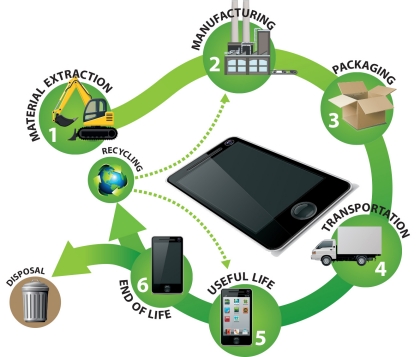October 27, 2017
There are two kinds of tech consumers in the world: those who buy phones and sell them online or otherwise as soon as the newer one comes out, and those who buy devices and sell them only when they’re damaged or broken. If you own an Apple iPhone, chances are you’re in the latter.
The Cupertino tech giant is well-known for manufacturing top-of-the-line materials with stunning design and durable hardware. In fact, iPhones as old as five years ago still work today despite taking the usual ding or clatter on the floor. Eventually, these handsets fail, however, and you’re out looking to sell your damaged iPhone. It may be as simple as a cracked screen or as complex as a broken program, but whatever the reason may be, there’s always the time to say goodbye to our tech buddies.
Here, we’re going to look at the typical life cycle of a smartphone—an iPhone—and throw a few tips on the side.

Everything begins with creation. Transforming the company’s ideas, workers extract materials and process them to be useful parts of your iPhone. It’s just the hardware, mind you, without the enormous amount of code needed to build the operating system that makes the slab of aluminum and glass you’re holding right now respond to your every need.
Once the new iPhones are out, you can grab them from the nearest store and enjoy it for a couple of years. In this stage, you’re most likely to feel the peak of power in your iPhone: blazing speed, fast reaction times. But phones are mechanical things, which means they eventually lose out after a set time. Apple says your iPhone is slated to last for three years, but if you’re lucky (or just plain careful) you might even exceed the ultimatum.
To make sure you make the most out of this stage, you can optimize storage and speed by keeping large files on the Cloud and paring your apps to the ones you only really use. You can also swap out batteries if you start experiencing charging and power capacity issues.
Green Mobile Telephone Screen Grass Phone Hand
When you’ve maxed out the usefulness of your phone, it starts to show breakage, either physically or in its program. You’ve hit the phone’s old age or its end-of-life stage. In this case, you have three options: you can reuse the phone by changing some of the internal parts, recycle it by looking for “We buy phones!” signs all over the Internet or opting for a buy-back program where its useable parts will be salvaged for manufacturing, or dispose of the handset altogether.
Now, disposal doesn’t necessarily mean you’ll throw the iPhone away. In fact, it isn’t recommended at all. Instead, you can sell your damaged iPhone (or just one with a cracked screen) to a reputable on-site or online buyer. Here at Swift Tech Buy, we offer a three-step, hassle free online process for your convenience.
Maybe it’s high time that you check on your device and see whether you’re missing out on speed or if it’s in its end-of-life stage. Or you might want to sell your damaged iPhone. It’s understandably a never-ending life cycle of tech, but you have to keep in mind that along with this cyclical tech consumption is a responsibility to moderate where the iPhones, when unused, go.
About the writer. Ahmed Bagoun is a phone enthusiast and a self-admitted Apple fanboy. He has been in the phone business for 6+ years. He’s currently the owner of Jad wireless phone repair shop in Milwaukee, Wisconsin and the phone trade-in website Swift Tech Buy.

We accept phones that are re-financed or not paid off as long as they are not blacklisted.
Sell My Device
We accept devices in a variety of conditions, including damaged or even broken devices.
Sell My Device
5855 W Silver Spring Dr. Milwaukee WI 53218

(877) 835-1941
Business Hours
Monday to Friday - 9am to 9pm
Closed on Saturday, Sunday

North Oak Shopping Center 6810 W. North Ave Chicago, IL 60707

(773) 413-7087
Business Hours
Monday to Friday - 10am to 6pm
Closed on Saturday, Sunday

info@swifttechbuy.com